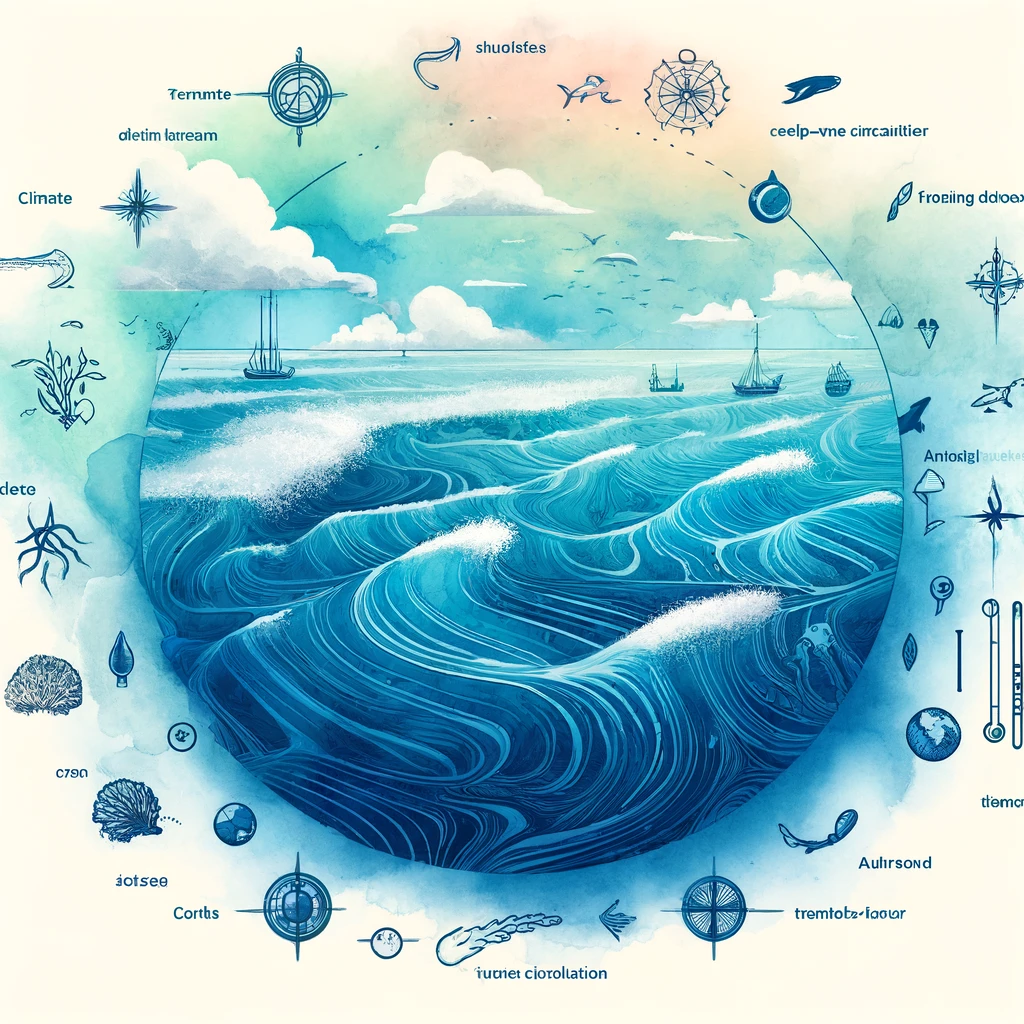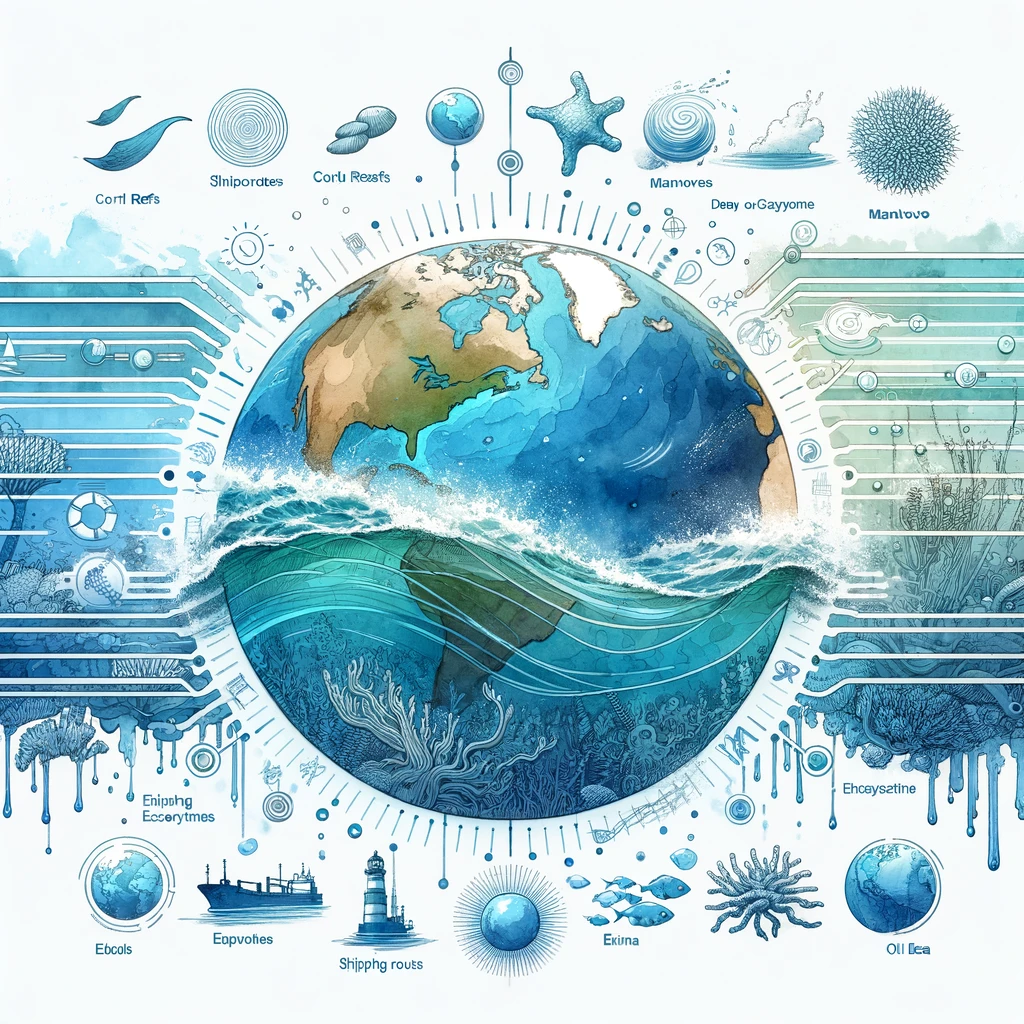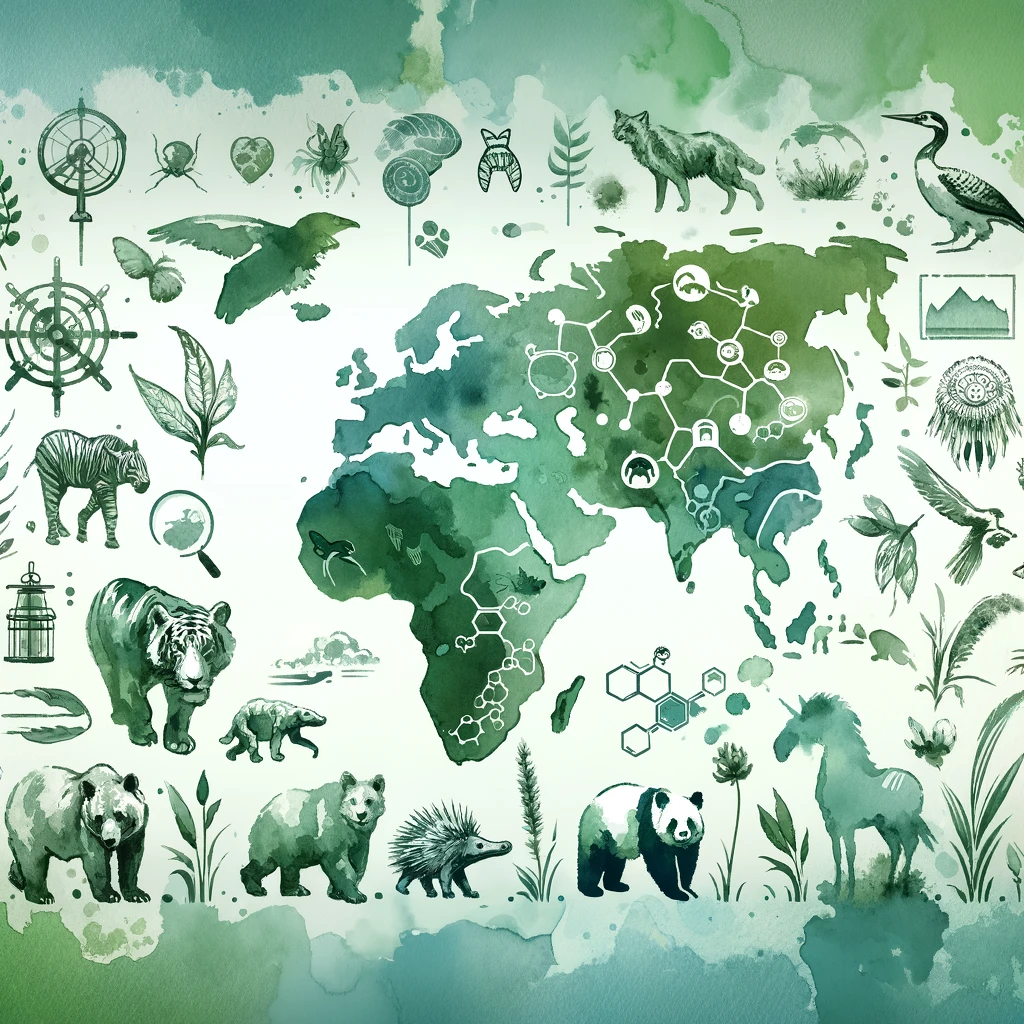Coastal processes and landforms are shaped by the dynamic interactions between the land and the sea. Understanding these processes is essential for managing and protecting coastal environments, which are critical for both natural ecosystems and human activities.
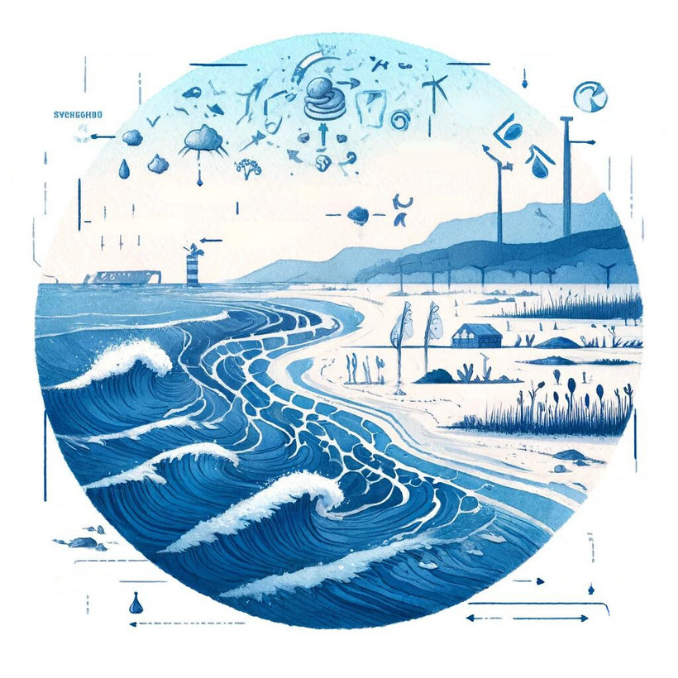
Wave Dynamics
1. Wave Generation:
- Waves are generated primarily by the wind as it blows across the surface of the sea. The size and energy of the waves depend on wind speed, duration, and the distance over which the wind blows (fetch).
- Factors influencing wave formation: Wind speed, duration, fetch, and the depth of the water.
2. Types of Waves:
- Constructive Waves: These are low-energy waves that deposit materials on the coast. They have a strong swash (movement of water up the beach) and a weak backwash (movement of water back into the sea), resulting in the building up of beaches.
- Characteristics: Long wavelength, low height, gentle slope.
- Impact: Contribute to beach formation and growth.
- Destructive Waves: High-energy waves that erode the coast. They have a strong backwash that removes material from the shore and a weak swash.
- Characteristics: Short wavelength, high height, steep slope.
- Impact: Cause coastal erosion and removal of beach material.
3. Wave Refraction:
- Wave Refraction: The bending of waves as they approach the shore at an angle. This process focuses wave energy on headlands and disperses it in bays, leading to varying rates of erosion and deposition.
- Impact on Coastal Erosion: Wave refraction can concentrate energy on protruding landforms like headlands, causing increased erosion, while reducing energy in bays, leading to sediment deposition and the formation of beaches.
Tidal Movements
1. Spring and Neap Tides:
- Spring Tides: Occur when the Sun, Moon, and Earth are in a straight line (during full moon and new moon). The gravitational forces of the Moon and the Sun combine, resulting in higher high tides and lower low tides.
- Impact: Greater tidal range, increased potential for coastal erosion and flooding.
- Neap Tides: Occur when the Sun and Moon are at right angles to each other (during the first and third quarters of the moon). The gravitational forces partially cancel each other out, resulting in lower high tides and higher low tides.
- Impact: Smaller tidal range, reduced energy for coastal erosion.
2. Tidal Currents:
- Tidal Currents: The horizontal flow of water that accompanies the rise and fall of the tide. They can transport sediment and influence the shape of the coastline.
- Flood Current: The incoming tide that moves towards the land.
- Ebb Current: The outgoing tide that moves away from the land.
3. Influence on Coastal Environments:
- Tidal movements play a significant role in shaping coastal landforms, influencing sediment transport, and the distribution of coastal habitats.
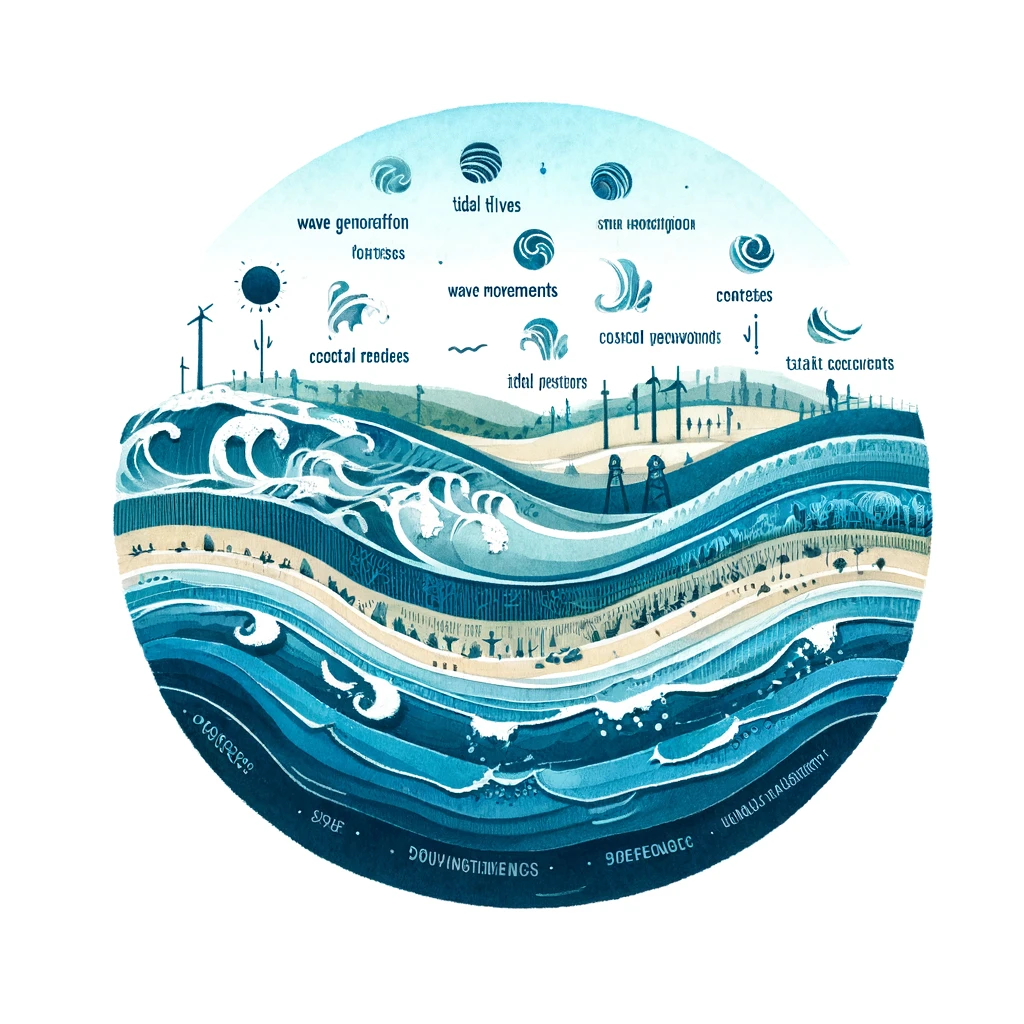
Coastal Erosion and Deposition
1. Processes:
- Hydraulic Action: The force of waves hitting the coast compresses air in cracks and joints in the rocks. This pressure can cause pieces of rock to break off.
- Abrasion: Waves carrying sand and pebbles grind down rock surfaces like sandpaper.
- Attrition: Material carried by the waves bumps into each other and breaks into smaller, smoother pieces.
- Solution: Certain types of rock, such as limestone, are dissolved by the acids in seawater.
2. Features:
- Cliffs: Steep rock faces formed by the erosive action of waves.
- Beaches: Accumulations of sand, pebbles, and other sediments deposited by wave action.
- Spits: Narrow strips of land that project from the coast into the sea, formed by longshore drift.
- Bars: Ridges of sand or shingle that form across the mouth of a river or the entrance to a bay.
3. Case Studies of Coastal Management:
- Holderness Coast, UK: One of the fastest eroding coastlines in Europe. Management strategies include sea walls, groynes, and beach nourishment to protect the coast from erosion and to preserve settlements and farmland.
Human Interventions
1. Coastal Defenses:
- Sea Walls: Concrete or rock barriers built along the coast to protect against wave action and prevent erosion.
- Impact: Can protect the coast but may lead to increased erosion elsewhere and are expensive to maintain.
- Groynes: Wooden, stone, or concrete barriers built perpendicular to the shoreline to trap sediment and build up the beach.
- Impact: Effective at reducing longshore drift but can cause erosion down the coast.
- Beach Nourishment: Adding sand or shingle to beaches to replace material lost through erosion.
- Impact: Can enhance beach size and protect the coast, but requires regular maintenance and can be expensive.
2. Impacts on Natural Processes:
- Human interventions can alter natural coastal processes, sometimes leading to unintended consequences such as increased erosion in other areas, changes in sediment transport, and impacts on coastal ecosystems.
3. Sustainable Coastal Management Practices:
- Integrated Coastal Zone Management (ICZM): A holistic approach that considers the entire coastal ecosystem, involving multiple stakeholders and balancing environmental, social, and economic objectives.
- Soft Engineering Techniques: These include beach nourishment, dune regeneration, and managed retreat, which work with natural processes to protect the coast.
- Legal and Policy Measures: Implementing regulations to control development in vulnerable coastal areas and promoting sustainable practices to minimize human impact.
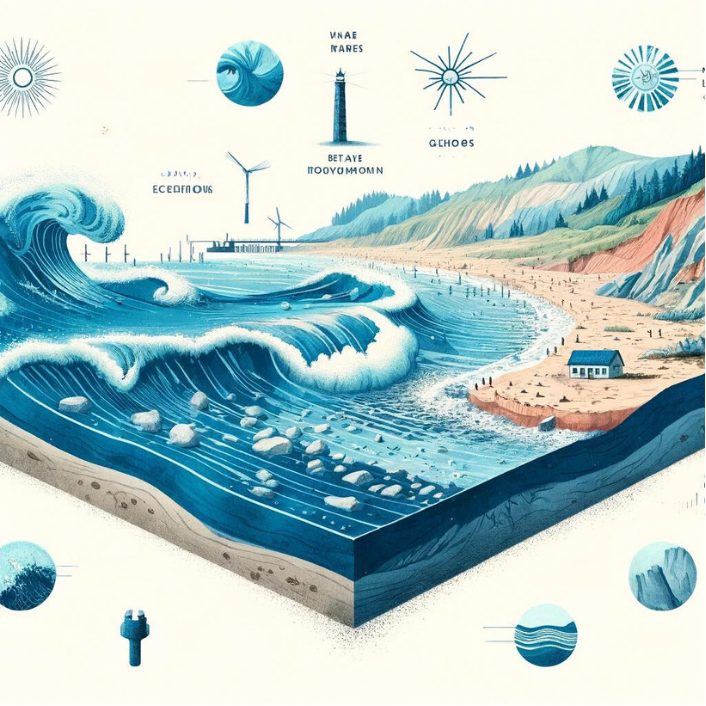
Conclusion
Understanding coastal processes and landforms is crucial for effective coastal management. By studying wave dynamics, tidal movements, and the processes of coastal erosion and deposition, we can develop strategies to protect and sustainably manage our coastlines. For UPSC aspirants, a thorough knowledge of these topics is essential for addressing questions related to geography, environmental studies, and sustainable development in the examination.

